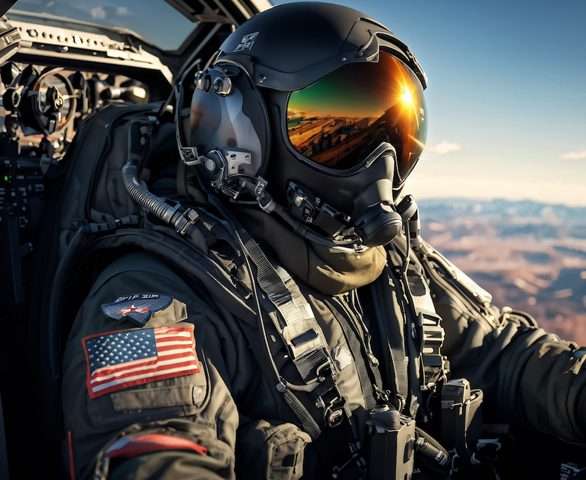Imagine a world where fighter pilots are constantly monitored, their well-being prioritized even in the face of extreme G-forces and demanding aerial maneuvers. This vision is now closer to reality thanks to the groundbreaking Pilot Guardian Helmet. This innovative technology goes beyond traditional head protection, seamlessly integrating advanced sensors and automated systems to safeguard aviators in unprecedented ways. The Pilot Guardian Helmet promises to dramatically reduce the risk of pilot incapacitation, offering a crucial safety net during high-stress situations. Its primary function is to detect subtle physiological changes indicative of fatigue, disorientation, or impending loss of consciousness, offering a new level of protection and awareness in the cockpit.
Enhanced Monitoring and Automated Response
The core of the Pilot Guardian Helmet’s functionality lies in its sophisticated suite of sensors. These sensors continuously monitor a pilot’s vital signs, including:
- Heart rate and heart rate variability
- Brainwave activity (EEG)
- Blood oxygen saturation
- Eye movement and pupil dilation
- Body temperature
This comprehensive data is then processed by an onboard AI system that is trained to recognize patterns associated with pilot fatigue, disorientation, and impending loss of consciousness. The AI system is constantly learning and adapting to each pilot’s unique physiological profile, further enhancing its accuracy and reliability.
Autopilot Engagement and Emergency Procedures
Perhaps the most remarkable feature of the Pilot Guardian Helmet is its ability to automatically engage the aircraft’s autopilot system in the event of pilot incapacitation. If the AI detects that a pilot is about to lose consciousness or has already passed out, it will immediately trigger a pre-programmed emergency sequence. This sequence may include:
- Activating the autopilot to stabilize the aircraft.
- Broadcasting an emergency distress signal to air traffic control.
- Automatically initiating a controlled descent to a safe altitude.
These automated actions can buy valuable time for the pilot to recover or for ground control to intervene, potentially preventing a catastrophic accident.
Comparative Advantages
While existing fighter pilot helmets offer protection and communication capabilities, the Pilot Guardian Helmet distinguishes itself through its proactive monitoring and automated response features. Consider the following comparison:
| Feature | Traditional Helmet | Pilot Guardian Helmet |
|---|---|---|
| Vital Sign Monitoring | Limited or None | Comprehensive and Continuous |
| Automated Response to Incapacitation | None | Automatic Autopilot Engagement and Emergency Signaling |
| Data Logging and Analysis | Limited | Extensive Data Logging for Post-Flight Analysis and Training |
The ability to not only monitor a pilot’s condition but also to automatically respond to emergencies represents a significant leap forward in aviation safety technology.

